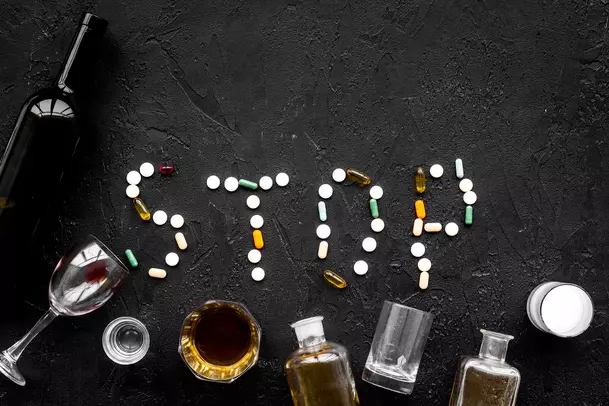Neuroscience: The Brain in Addiction and Recovery National Institute on Alcohol Abuse and Alcoholism NIAAA

Dopamine fasting is not cognitive-behavioral therapy (CBT), which offers long-term psychological tools to manage addiction and other issues. For example, when someone engages in gambling and experiences a win, dopamine is released in the brain, creating a sense of pleasure and reinforcing the behavior of gambling. This reinforcement makes it more likely that the individual will Halfway house continue to engage in gambling in the future.

Individual Variations in Alcohol’s Effects on Dopamine
- In postmortem brain samples from human alcoholics we found a strong down-regulation of the D1 receptor- and DA transporter (DAT)-binding sites, but D2-like receptor binding was unaffected.
- Some experts believe many psychological problems stem from excessive outside intrusions rather than inner conflicts.
- Burst-firing of dopamine neurons enables learning—long-term potentiation (LTP)—of search and avoidance responses.
- Some drugs, such as marijuana and heroin, can activate neurons because their chemical structure mimics that of a natural neurotransmitter in the body.
- This flood of feel-good chemicals creates a powerful association between the substance or behavior and pleasure, setting the stage for addiction.
- For instance, studies on how THC affects dopamine levels may provide insights into the interactions between different substances and the brain’s reward system.
Inhibition of mesostriatal DA neurons can disrupt exploration of novel conspecifics (Bariselli et al., 2018) and stimulating these neurons can enhance social preference (Bariselli et al., 2016). Drug-evoked changes in VTA DA signaling and physiology can impact these social behaviors. For example, neonatal exposure to amphetamine increases VTA DA activity and decreases social behavior in adulthood (Fukushiro et al., 2015). This may be due to a D1-specific mechanism in the NAc, as blocking D1-like DA receptors in this region rescues impaired social bonding behavior in amphetamine-treated male prairie voles (Liu et al., 2010).
Get Serious About Psychiatry Learning
- Motivational arousal varies over time and, in resting animals, determines when a previously sated animal starts to become hungry and interested in seeking food.
- In the fifth edition of the diagnostic and statistical manual of mental disorders (DSM), the term alcohol use disorder was introduced and grossly defined as problem drinking that has become severe.
- The Taq1A allele frequency of non-assessed controls was more than that of non-assessed alcoholics.
- Consequently, dopamine acts at multiple sites to control the integration of biologically relevant information that determines motivated responding.
- It affects several neurological pathways and causes significant changes in the brain.
- This technique allows individuals to see real-time visualizations of their brain activity, potentially helping them learn to self-regulate brain functions related to addiction.
Social isolation can also reduce the total dendritic length of MSNs in the NAc (Wang et al., 2012), while increasing DA signaling (Hall et al., 1999; Yorgason et al., 2016). The ability to produce aberrant or exaggerated mesostriatal DA signaling is thus one mechanism by which social stressors can produce addiction vulnerability. Cannabis There are many cannabinoids, some of which have psychoactive effects and remain to be studied. The primary psychoactive ingredient in marijuana is ∆9-tetrahydrocannabinol (THC).
Genetics of the reward pathways
Ethanol The evidence that dopamine is important for the rewarding effects of ethanol is also substantial but weaker than that supporting dopamine involvement in stimulant or opiate reward. Ethanol (and ethanol withdrawal) increases burst-firing in dopaminergic animals 127, 128; ethanol also increases pacemaker dopaminergic firing 129. Ethanol can increase dopamine levels to 150–200% of baseline 94, and increases dopamine cell burst-firing as well as pacemaker-like firing in the VTA; note, however, that a subset of VTA dopamine neurons are instead inhibited by ethanol 128 and this might also be important. The mechanism of action is, however, not completely understood, and although in vitro studies indicate that OSU6162, like aripiprazole, acts as a partial agonist at D2 receptors 191, 192, behavioural studies have failed to demonstrate any intrinsic activity of the compound (195).

Specifically, prefrontal regions involved in executive functions and their connections to other brain regions are not fully developed in adolescents, which may make it harder for them to regulate the motivation to drink. Because the brain is adaptable and learns quickly during adolescence, and because alcohol is such a strong reinforcer for adolescents, alcohol use is more likely to be repeated, become a habit, and eventually evolve into a problematic drinking pattern that may lead to AUD. The brain mediates our motivation to repeat behaviors that lead to pleasurable, rewarding states or reduce uncomfortable, distressing physical or emotional states. In this context, drinking alcohol can be motivated by its ability to provide both relief from aversive states and reward. These dual, powerful reinforcing effects help explain why some people drink and why some people use alcohol to excess.
What happens to dopamine levels in addiction?

This complex interaction is part of what makes alcohol’s effects on the brain so intricate and potentially problematic. It can enhance the sensitivity of certain dopamine receptors, particularly the D2 receptors, which can amplify the effects of the increased dopamine release. This dual action – increasing dopamine release and enhancing receptor sensitivity – contributes to alcohol’s potent rewarding effects. However, it’s important to note that while alcohol initially boosts dopamine levels, its effects on the dopamine system are far more complex and potentially problematic in the long term.
There’s no single cause of addiction
The relationship between alcohol and dopamine is not a simple one of increase or decrease, but rather a dynamic interaction that changes over time and with repeated exposure. In this article, we’ll explore the basics of dopamine and its interaction with alcohol, examine both the short-term and long-term effects of alcohol on dopamine levels, discuss individual variations in these effects, and consider the implications for health and addiction. By the end, you’ll have a comprehensive understanding of how that seemingly innocent cocktail can set off a complex chain of neurochemical events in your brain.
The Dopamine System in Mediating Alcohol Effects in Humans
Critically, much work remains to better understand how the larger mesocorticostriatal network changes over time as both an antecedent and consequence of drug taking. Given its core role in reward processes, the mesostriatal pathway has a central role in social behavior. Social interaction increases mesostriatal DA signaling and NAc neurons are active during approach to both novel conspecifics and pair-bonded partners (Robinson et al., 2002; Gunaydin et al., 2014; Scribner et al., 2020). Mesostriatal DA neurons projecting to the NAc are necessary dopamine and alcoholism for normal social interaction behavior (Gunaydin et al., 2014).
Meth Addiction Diagnosis Codes: Understanding Medical Classification and Treatment
- CNS neurotransmitters play an important role in the development of alcohol addiction.
- To recap, alcohol initially increases dopamine levels, contributing to its pleasurable effects.
- The mechanisms involved behind alcohol sensitization, tolerance, withdrawal and dependence are discussed in the following sections.
- SB A, naltrexone and acamprosate were also tested in a model of drug/cue-triggered reinstatement of alcohol-seeking behavior.
A large body of evidence indicates that dopamine plays an important role in motivation and reinforcement6 (Wise 1982; Robbins et al. 1989; Di Chiara 1995). These factors include (1) the type of stimuli that activate dopaminergic neurons, (2) the specific brain area(s) affected by dopamine, and (3) the mode of dopaminergic neurotransmission (i.e., whether phasic-synaptic or tonic-nonsynaptic). The role of dopamine in alcohol addiction and recovery is complex and multifaceted. From the initial artificial boost provided by alcohol to the challenges of withdrawal and long-term recovery, dopamine plays a central role in the entire process. Understanding these changes can provide valuable insights for those on the path to recovery and those supporting them. The long-term changes in the brain’s reward system following alcohol cessation are still being studied.